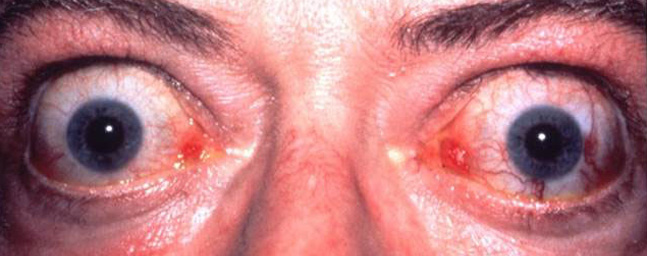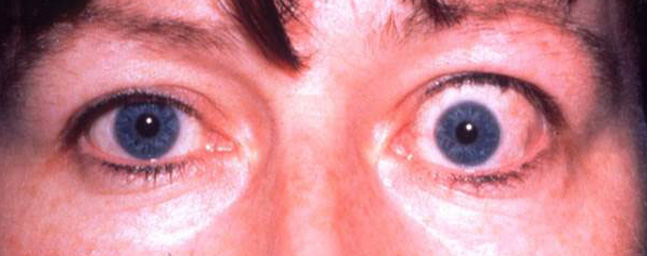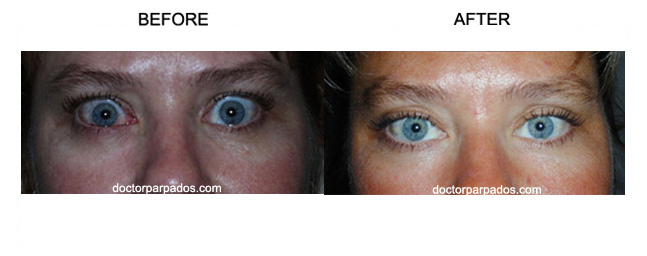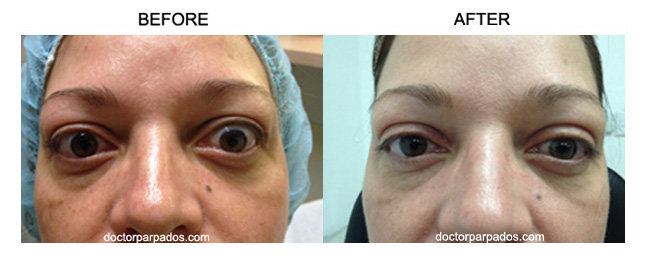Thyroid Eye Disease
Thyroid Eye Disease or Grave’s Eye Disease is perhaps the most common orbital disease in our population. It is an autoimmune problem, most commonly noted in patient with a history of either high or low thyroid hormones. However, some patients might demonstrate no evidence of thyroid dysfunction. Thyroid Eye Disease can go into periods of remission as well. When it has been inactive for a period of more than 6 months, it’s less likely to recur.
Thyroid Eye Disease can be divided in stages. During the early part of the disease, the eyes become red, swollen, and watery. This early part of the disease is referred to as the active and inflammatory phase of the disease. During this initial phase of the disease, patients may benefit from treatments to reduce inflammation such as anti-inflammatory medications or injections, topical lubricating eye drops and ointments, and in some cases, referral for orbital radiation. In the later part of the disease the eyes may bulge out of the socket, the eyelids may be open too wide, or the patient may have double vision. In this small percentage of patients, orbital decompression may be called. Symptoms for these patients may include:
- Pain in the eyes when looking up, down, or sideways
- Dryness, itching, dry eyes, difficulty wearing contact lenses
- Inflammation and swelling of the eye, and its surrounding tissues
- Swelling in the orbital tissues which can cause sufferers to have a wide-eyed or bulging stare




